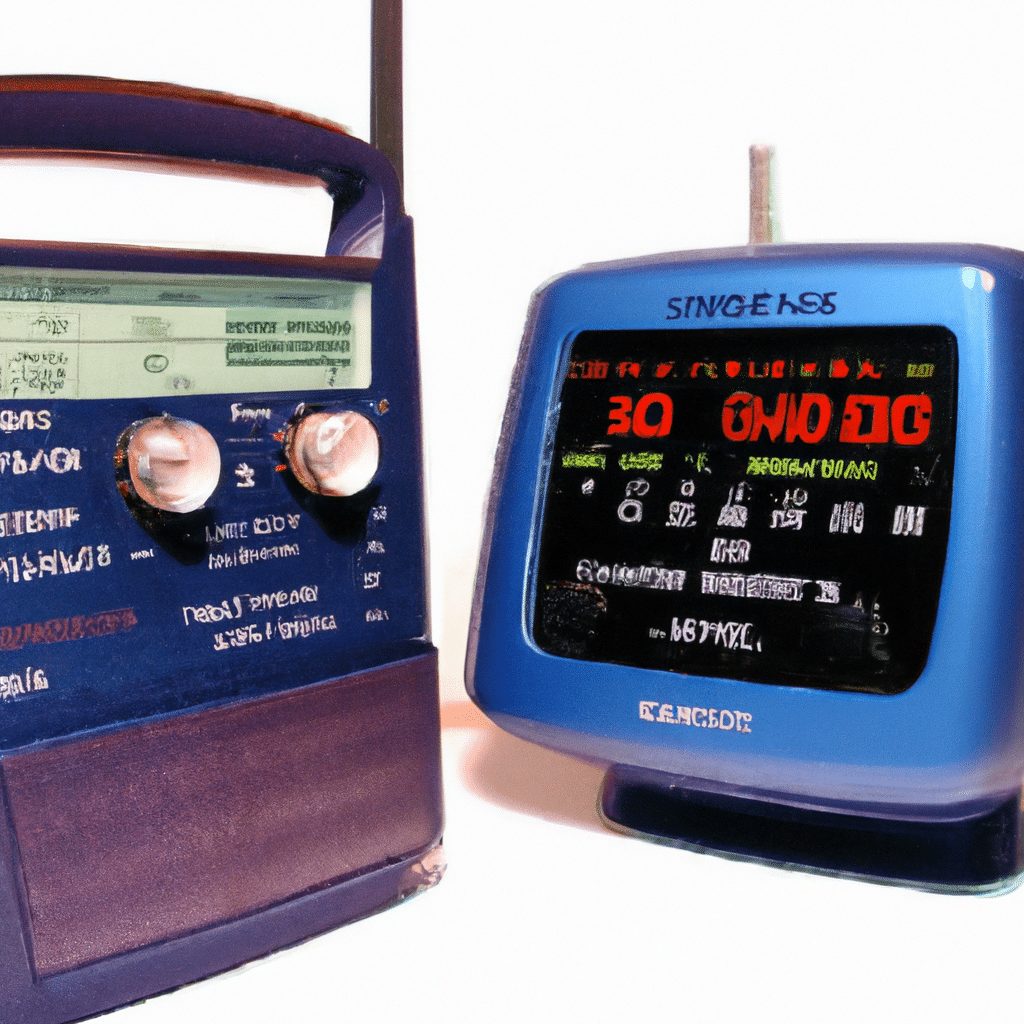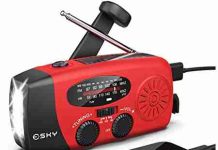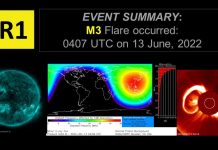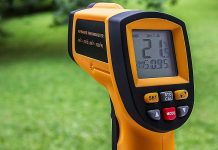Curious about the subtle distinctions between a NOAA radio and a regular radio? Look no further! In this article, we are about to uncover the key disparities that set them apart. Whether you’re an outdoor enthusiast or simply eager to enhance your emergency preparedness, understanding these differences will undoubtedly prove invaluable. So, without further ado, let’s embark on this enlightening journey to become well-versed in NOAA radios and their unique capabilities.
Overview
In today’s world, where weather conditions can change rapidly and unexpectedly, staying informed about weather updates is crucial. This is where NOAA radios come into play. NOAA, which stands for the National Oceanic and Atmospheric Administration, is a reputable source of weather information in the United States. A NOAA radio is specifically designed to receive these weather alerts and broadcasts, ensuring that we are always aware of any potential dangers or changing weather patterns. In this article, we will explore the functionality, features, design, usage, availability, compatibility, advantages, and disadvantages of NOAA radios.
Functionality
Receiving Weather Alerts
The primary function of a NOAA radio is to receive weather alerts issued by the National Weather Service. These alerts include severe weather warnings, watches, and forecasts. NOAA radios utilize a specific frequency range dedicated to weather broadcasts, allowing them to capture these alerts in real-time. By simply turning on the NOAA radio and adjusting the settings, we can stay informed about any potential weather hazards in our area.
Broadcasting
Apart from receiving weather alerts, NOAA radios also have the capability to broadcast weather-related information. This includes updates on current weather conditions, local forecasts, and marine forecasts. The broadcasting feature enables users to gather comprehensive and up-to-date weather information conveniently, without relying solely on traditional media sources or internet access.
Reception Range
NOAA radios have an impressive reception range, ensuring that we can stay informed even if we are located in remote or rural areas. The signals from NOAA transmitters can cover a wide geographical area, allowing us to receive weather alerts and broadcasts from nearby NOAA stations. This reception range makes NOAA radios a reliable and valuable tool in areas where cellular coverage or internet access may be limited.
Features
Weather Band
One of the distinctive features of NOAA radios is the inclusion of the Weather Band. This band consists of seven dedicated frequencies used by the National Weather Service to transmit weather information. These frequencies are constantly monitored by NOAA radios, ensuring that we always have access to the latest weather updates. The Weather Band feature provides a reliable and direct connection to official weather information sources.
Alert Notifications
NOAA radios are equipped with alert notification systems to ensure that we are promptly notified of any severe weather conditions. These systems are capable of emitting loud and distinct alarms when a weather alert is received. The NOAA radio will also automatically turn on and broadcast the alert, even if it was initially turned off. This feature enhances our safety by providing immediate warnings and encouraging prompt action during potential weather emergencies.
Battery Back-up
To ensure continuous functionality, especially during power outages or emergencies, many NOAA radios come with battery back-up features. These radios have built-in rechargeable batteries or the ability to use standard batteries, allowing them to operate even when external power sources are unavailable. The inclusion of battery back-up enhances the reliability and usability of NOAA radios, particularly in critical situations where uninterrupted access to weather information is vital.
Design
Physical Appearance
NOAA radios are designed with a focus on durability and portability. They typically have a compact and rugged construction, making them suitable for outdoor use or for taking on adventures. The physical appearance often resembles a handheld device or a small box-like structure. NOAA radios may also feature an antenna for improved signal reception and a built-in speaker for clear audio output.
Display and Controls
The display and control layout of NOAA radios are designed to be user-friendly and intuitive. Most NOAA radios have a simple and straightforward interface, featuring a small LCD screen that displays essential information such as current weather conditions, alerts, and battery status. The controls typically consist of buttons or switches for adjusting volume, selecting channels, and activating various functions. The simplicity and ease of use of these controls ensure that we can navigate our NOAA radio effortlessly, even during stressful situations.
Usage
Intended Purpose
NOAA radios are specifically designed to fulfill a crucial role in public safety and emergency preparedness. They are widely used by individuals, families, and organizations to stay informed about changing weather conditions and potential hazards. Whether we are at home, work, on the road, or engaged in outdoor activities, a NOAA radio serves as a reliable tool to keep us updated and prepared for any weather-related events.
Emergency Preparedness
Having a NOAA radio as part of our emergency preparedness kit is highly recommended. During natural disasters or severe weather events, power outages and loss of internet access are common occurrences. In such situations, where communication channels may be disrupted, a NOAA radio can bridge the gap and provide critical weather information. By proactively staying informed, we can make informed decisions to protect ourselves and our loved ones, potentially saving lives and minimizing damage.
Availability
Cost
NOAA radios are available in a range of prices, catering to different budgets and preferences. Basic models can be found for as low as $20, while more advanced models with additional features may cost upwards of $100. The cost of a NOAA radio generally depends on factors such as brand reputation, build quality, included features, and additional functionalities.
Variety
NOAA radios are widely available and can be found in various retail stores, electronics outlets, and online marketplaces. They are manufactured by several reputable brands, offering a wide range of options to choose from. It is essential to consider our specific needs, preferences, and budget while selecting a NOAA radio to ensure we find the most suitable device for our requirements.
Compatibility
Frequency Range
NOAA radios operate on specific frequency ranges dedicated to weather broadcasting. These frequencies fall under the VHF (Very High Frequency) band, which allows for reliable transmission and reception of weather alerts. By adhering to these designated frequencies, NOAA radios can effectively receive weather information without interference from other channels and signals.
Power Source
NOAA radios are primarily powered by either external power sources, batteries, or a combination of both. Many NOAA radios feature an AC power adapter, allowing them to be powered through a standard wall outlet. Additionally, they often incorporate built-in rechargeable batteries or the ability to use standard batteries, providing flexibility in terms of power sources. This ensures that NOAA radios can continue functioning even when external power is unavailable.
Advantages
Weather Updates
The primary advantage of using a NOAA radio is the direct access to accurate and updated weather information. While traditional radios may provide general news and music broadcasts, NOAA radios focus specifically on weather-related broadcasts. This specialized focus allows us to stay informed about severe weather warnings, watches, and forecasts, enabling us to take necessary precautions and make informed decisions based on the latest information.
Safety Benefits
By being equipped with a NOAA radio, we gain a significant safety advantage during severe weather events. NOAA radios promptly notify us of potential weather hazards, allowing us to prepare and respond accordingly. Whether it’s seeking shelter, evacuating, or simply staying updated about adverse weather conditions, having a NOAA radio by our side enhances our overall safety and minimizes the risks associated with unpredictable weather phenomena.
Disadvantages
Limited Broadcasts
While NOAA radios are essential tools for weather updates, it’s important to note that their broadcasts are limited to weather-related information. Unlike traditional radios that provide a wide range of programming options, NOAA radios solely focus on weather alerts and forecasts. This limited scope may not cater to everyone’s entertainment or informational needs, particularly during times when weather emergencies are not a concern.
Signal Interference
Another disadvantage of using NOAA radios is the potential for signal interference. Factors such as distance from NOAA transmitters, geographical obstructions, and atmospheric conditions can affect the clarity and strength of the received signal. While the reception range of NOAA radios is generally excellent, signal interference may occur in certain locations, resulting in less reliable weather updates. However, advancements in technology have significantly reduced these instances, ensuring improved reception for most users.
Conclusion
In conclusion, NOAA radios serve as invaluable tools for staying informed about weather conditions and potential hazards. With their ability to receive weather alerts, broadcast information, and provide critical emergency notifications, NOAA radios play a vital role in public safety and emergency preparedness. The unique features, design considerations, and ease of use make them an essential addition to any home, workplace, or outdoor adventure. While there may be some limitations and potential signal interference, the advantages of NOAA radios, such as direct weather updates and enhanced safety, outweigh any disadvantages. By investing in a NOAA radio, we can stay well-prepared for unpredictable weather events, protecting ourselves and our loved ones with timely and accurate information.








































